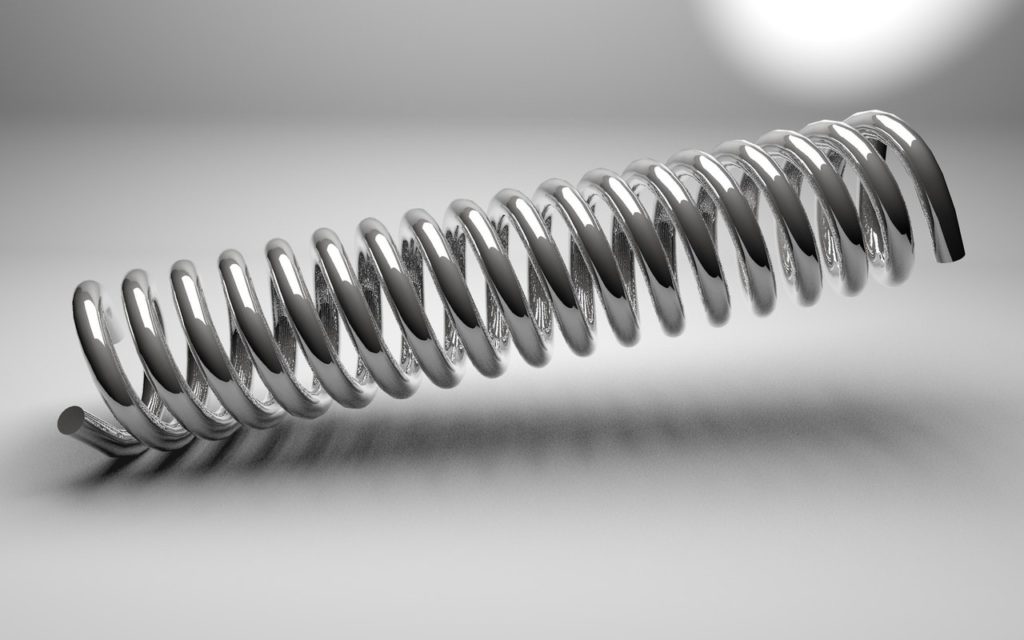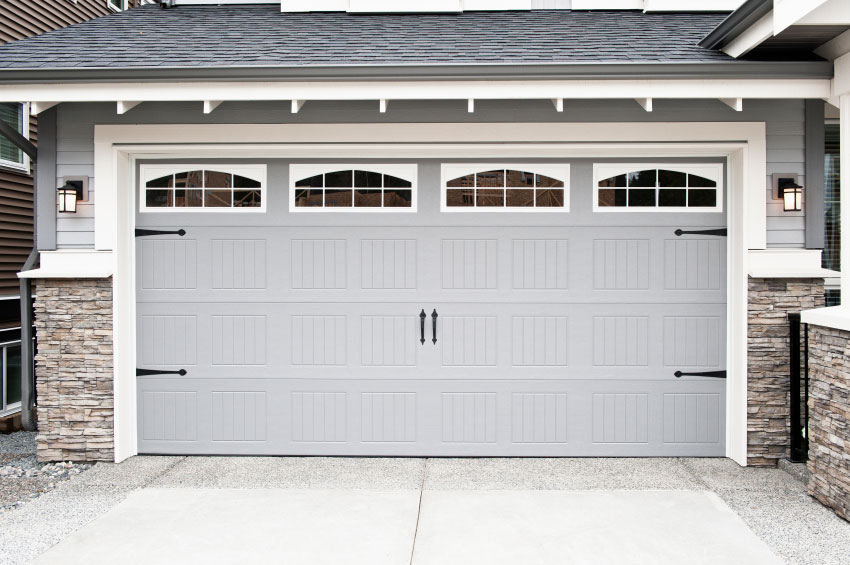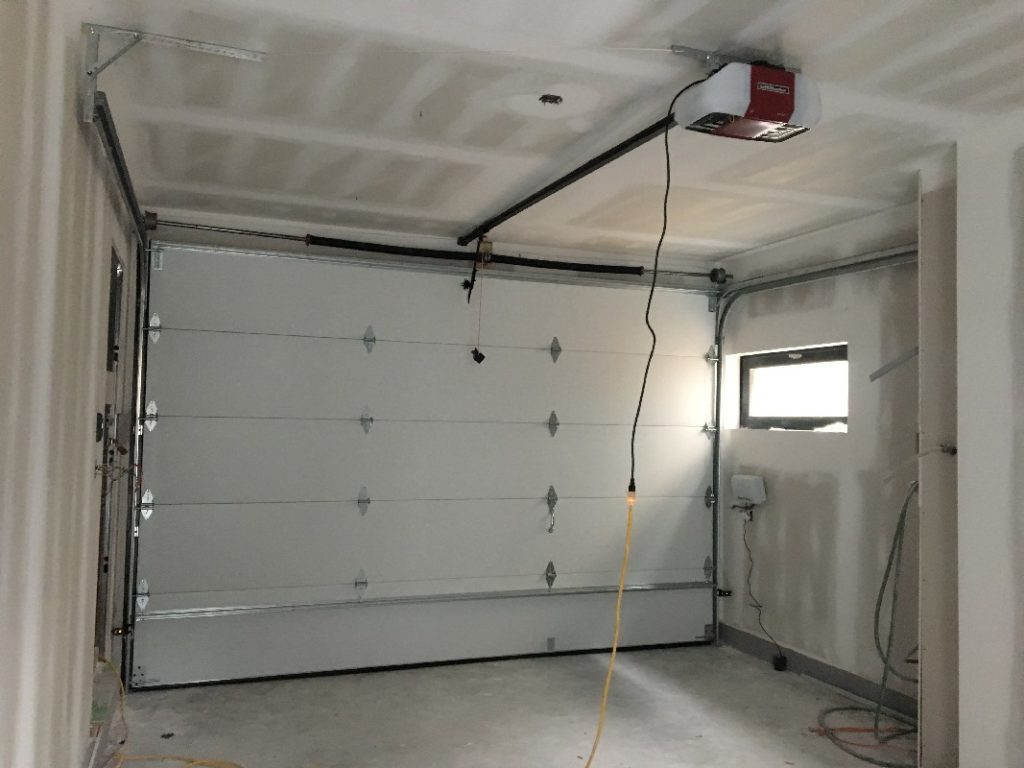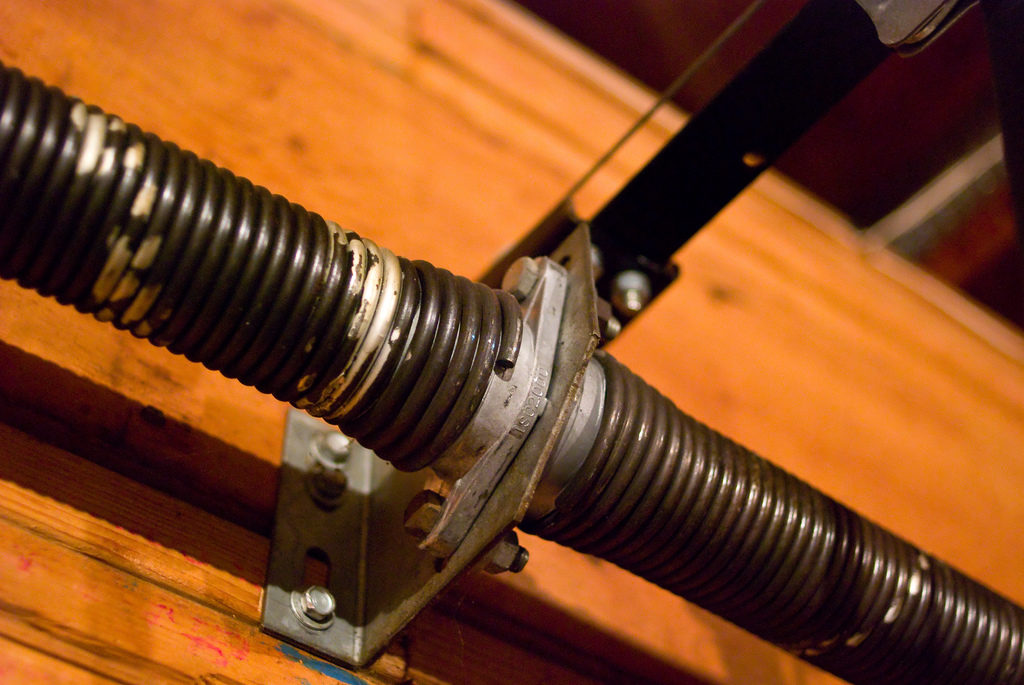You drive up toward your house on a snowy Calgary night, hit the button on your garage door remote and the garage door opener dutifully swings into action lifting the door out of your way so you can glide into the garage safe and sound. Once inside the opener once again goes to work lowering the door back into place so that you’re nice and warm and dry when you get out of the car. Sound about right? Well, actually it’s not. Because, contrary to popular belief, the garage door opener is not really what opens the door at all. In fact a better name for that device would be the “garage door starter and regulator”. Because that’s what it does. It gets the door started and then regulates the movement so that it’s nice and smooth and neither too fast nor too slow. But if the “opener” doesn’t actually open the door, then what does? The answer is: the springs.
Table Of Contents
- The Much Ignored Garage Door Spring: Credit Where Credit is Due
- Everything You Ever Wanted to Know About Garage Door Springs
- General Questions Related to Garage Door Springs
- The Different Types of Garage Doors
- Conclusion
The Much Ignored Garage Door Spring: Credit Where Credit is Due
The development of the first overhead door is typically attributed to one C. G. Johnson who invented a folding door that could be lifted upward. This method of opening was much more convenient than carriage house doors, especially for those in urban areas who didn’t have room for doors that swung open on hinges or even slid to one side or another. A central component of the new overhead design was the inclusion of the extension spring, which Johnson knew was capable of storing enormous amounts of energy that could be used to actually lift the door. The rest, as they say, is history. Today your automatic overhead door (even your manually operated overhead door if you have one) would not work without its springs.
Everything You Ever Wanted to Know About Garage Door Springs
There are 2 types of garage door springs used on overhead doors today: the extension spring and the torsion spring. We’re going to take a close look at both types and answer as many questions about each as we can think of. Let’s get started.
Extension Springs
Extension springs have remained the standard when it comes to overhead garage doors since they were first used by C. G. Johnson way back in the day. Here are some questions specific to extension springs.
How does an extension spring work?
When the door closes the extension spring absorbs most of the weight of the door and stores it as energy. When the door is opened the extension spring releases its energy to lift the door; which can often weigh several hundred pounds and would have been impossible for the garage door opener to lift by itself. Most of the time garage doors will use 2 extension springs with one being located above each track perpendicular to the door itself. Some garage door setups will use a single extension spring. Although that type of setup is not common and is almost exclusively found on the lightest, cheapest doors.
Why Use Extension Springs?
The primary reason many garage door manufacturers use extension springs is because they’re cheaper than torsion springs. That’s also the reason they’re so popular with homeowners. They save money on a garage door with extension springs as compared to a door with a torsion spring or springs. Another advantage which doesn’t come into play all that often is that some smaller garages are configured in a way that doesn’t leave enough room in the space over the door to install a torsion spring. In that case extension springs are the only practical option. Mostly though, it’s a matter of cost/price.
Should I Have 1 or 2 Extension Springs on my Door?
Extension springs aren’t usually capable of storing as much energy as torsion springs, which is one reason you’ll most often find 2 extension springs on a given door. But it’s not the only reason. Another reason is safety. If you have 1 extension spring and it breaks the safety measures built into the door might catch it before it falls on you, your car or your loved one. Or it they may not. With 2 extension springs one can break and the other will catch the door and prevent it from crashing to the ground. Note that using the garage door opener if 1 extension spring is broken will likely result in the door raising unevenly and putting undue stress and strain on the other garage door parts.
What are Some Tips for Maintaining Extension Springs?
There’s no secret formula for maintaining extension springs. The best thing to do is to enlist the garage door experts at B&W Garage Doors to conduct regular checks of the entire door, including the extension springs, to make sure everything is in optimal condition. This will ensure you get the most out of your garage door and will prevent small problems from blossoming into big ones.
Looking for Garage Door Service, Check out this DIY Garage Door Service Guide
How Long Do Extension Springs Last?
The expected lifespan of a garage door spring is measured in cycles, with 1 cycle equalling 1 complete opening and closing of the door. You can see that, when measured in this fashion, it’s difficult to say that the spring will last for X number of years. A little math though will show that if the door is subjected to 2 cycles per day it should last on average about 13 years. If the door is subjected to 4 cycles per day you can expect to have to replace the extension springs every 6 1/2 years or so. If you only leave and return home through the garage door an average of 3 times a week however, you can expect to get some 30 years out of your extension springs (if they don’t rust through first).
Torsion Springs
It’s not known exactly when torsion springs were first used on garage doors but their use became fairly commonplace after World War II. Since then they’ve grown in popularity until today, when they’re used on nearly as many garage doors as extension springs. Torsion springs are situated parallel to the garage door on the wall above the door. They have some advantages over extension springs with the most obvious advantage being that they’re more powerful. They’re also more durable and some say quieter as well. On the downside they’re more expensive than extension springs and they’re extremely dangerous to work around. You should never try to affect garage door repair on a torsion spring yourself. Here are some common torsion spring related questions.
What type of garage door uses torsion springs?
Torsion springs are found on every type of garage door (although it’s rare to find them on single panel doors). Their use is not determined so much by the style of the door as by price. While there are exceptions to every rule in general less expensive garage doors use extension springs while more expensive garage doors use torsion springs.
Do some doors use more than 1 torsion spring?
For years the typical torsion spring driven garage door used a single large spring. In recent years however that has begun to change and it’s not uncommon to find garage doors now using 2 smaller torsion springs rather than a single large spring. This has the same effect as it does with extension springs. That is, if one of the springs breaks the other will prevent the door from crashing to the ground. However, just as with extension springs it is not recommended that you use the garage door if 1 of the 2 torsion springs has broken. It will result in uneven force being applied to the tracks, rollers, cables and other garage door parts. And this could cause extensive damage.
How do I maintain the torsion springs on my garage door?
As with extension springs the best way is to have the pros from B&W Garage Doors Calgary conduct regular maintenance checks of your door. They’ll make sure the torsion springs are clean and clear of debris and that they are properly lubricated so they’ll perform the way they’re intended to.
B&W Calgary garage doors Specialists Call us today @ 403-275-6048
What is the lifespan of the torsion spring?
Most torsion springs are rated to last for up to 15,000 cycles. A cycle, as we mentioned above, is one complete opening and closing of the door. If the springs are subjected to 2 cycles per day then they can be expected to last around 20 years if properly maintained. However more durable, longer lasting torsion springs are available today that will last for up to 30,000 cycles or an incredible 40 years if used twice a day. In reality these types of springs are intended to be used on doors that see a higher than average volume of openings and closings and not necessarily designed to last for 40 years or more.
Should I get a right or left wind spring?
Not many people are aware that torsion springs are either right wind or left wind. When 2 torsion springs are in play the one on the left is typically right wind and the one on the right is left wind. So which “wind” you get (that’s “wind” as in “find”) for your replacement spring will depend on whether you need to replace the left or right spring. The wind standard we just described also applies if there’s only a single spring: left/right, right/left.
General Questions Related to Garage Door Springs

Can I Replace Springs Myself?
Here’s one we hear every day and every day the answer is the same. You can but you shouldn’t. Garage springs store massive amounts of energy. Enough to lift a door that often weighs hundreds of pounds. If a spring snaps while you’re working on it the result could be catastrophic. People have died working on and around springs. As such you should always call for professional help when it comes to replacing the garage door springs no matter how much DIY experience you have or how simple it looks to you. Professional garage door technicians like those at B&W go through lengthy training and have extensive hands on experience regarding the proper way to handle garage door springs. Leave this type of garage door repair to them.
For Garage Doors Opener service in Calgary contact B&W Garage Door Specialists @ 403-275-6048.
Can any spring be used on any garage door?
No. Springs come in different sizes and strengths to accommodate different sizes and weights of garage doors. Trying to lift a heavy door with short, light gauge springs isn’t going to work for long. Your garage door installation and repair specialists at B&W will be able to fix you up with exactly the right spring to match your door, regardless of make, model and age.
Do I always need to replace a rusty spring?
Not always. It really depends on the extent of the rust. If you have a good history of having your springs oiled on a regular basis and the rust is a new phenomenon – perhaps caused by a recent spell of extremely wet weather – chances are all you need to do is have the pros from B&W have a look. They’ll likely clean off any surface rust and give the spring plenty of lube. If, however, the corrosion has been there for a while and gained a substantial footing it may have undermined the integrity of the spring enough to warrant replacement.
If my door is lifting unevenly is it because of my springs?
Possibly. Especially if you have 2 springs on your door. It could indicate that one has snapped and you weren’t aware of it. Or it could be that one of the springs was simply defective. On the other hand it may indicate a problem with the track. Perhaps one of the tracks has come loose or there’s an obstruction in the track that’s causing one side of the door to drag behind the other. Also, there’s a chance it’s an issue with the rollers. If a roller has popped out of the track that could cause one side of the door to lag. Of if a roller is stuck and unable to turn it could also cause one side of the door to drag. Call B&W in Calgary for this type of garage door repair.
The Different Types of Garage Doors
Single Panel Doors

Sectional Garage Doors
There is no doubt that the most popular type of garage door in the world today is the sectional garage door. Sectional doors bend along horizontal lines as they transition from their vertical start to their horizontal position up parallel to the ceiling of the garage. Sectional garage doors come in a wide array of styles and in a half dozen and more materials including wood, steel and fiberglass. Sectional doors use either extension springs or torsion springs and, as mentioned earlier, which one you choose is often a matter of how much you want to spend, with torsion springs being the more expensive option.
Sectional garage doors have grown up from their prosaic beginnings when white wooden doors were pretty much your only choice. Today they can be designed to practically disappear into the exterior of your home or make a bold architectural statement in keeping with your custom designed house. From glass panel doors to fully insulated steel doors that will make a significant difference in the temperature inside your garage, today’s sectional garage doors can do it all.
Carriage House Doors
Carriage house doors are the original garage doors going all the way back to the days of the horse and carriage. Today they’re a relative rarity, reserved almost exclusively for high end or historic properties where tradition rules and saving space isn’t such a huge concern. Carriage house doors are manually powered most of the time, although you can get them with hydraulic or other opening systems. Since they swing open they don’t use either extension or torsion springs.
Conclusion
The garage door spring is the unheralded workhorse of the modern overhead garage door system. Without them there would be no overhead garage doors and no overhead garage door industry. If you have any questions about springs or need garage door repair or garage door parts call the pros and B&W Garage Doors Calgary.


